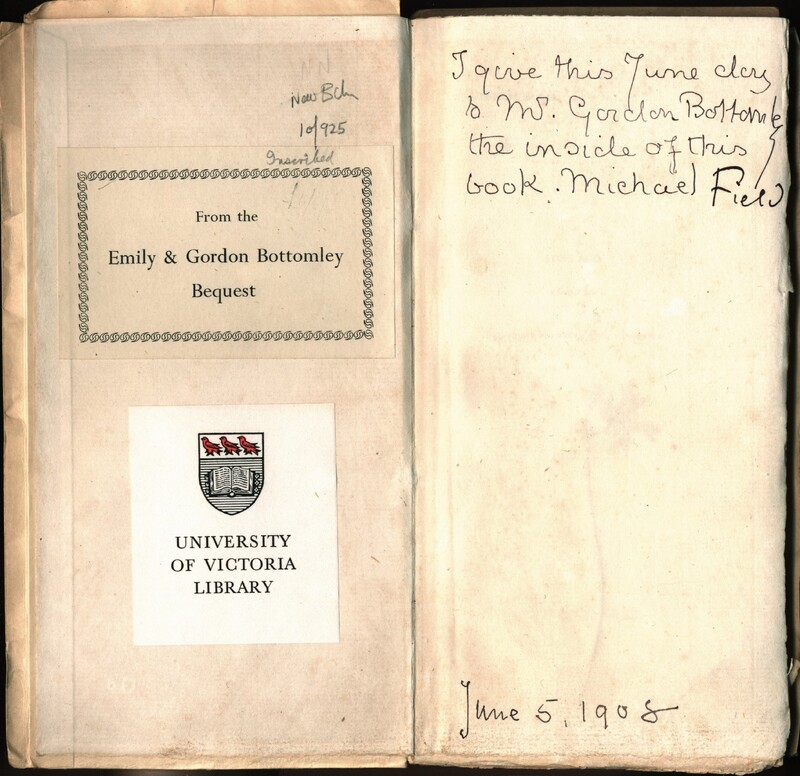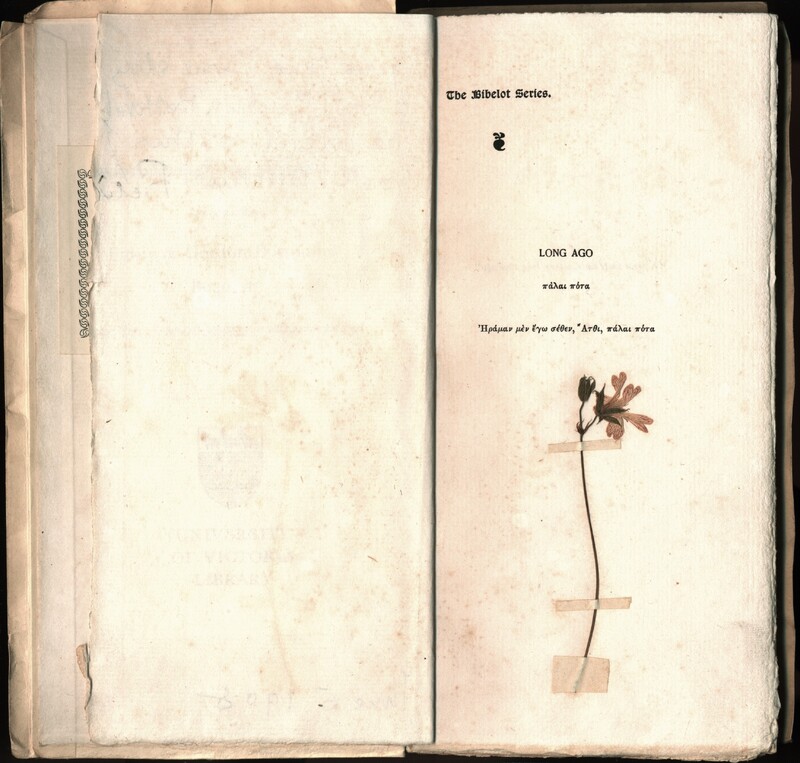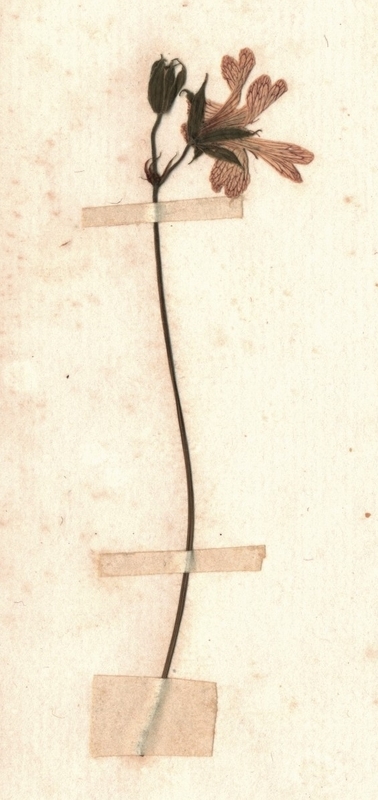Book Traces
In most traditional studies of literary texts, emphasis is put on the textual content as the main value of a book. Yet with this copy of Long Ago, I contend that its value is inextricable from its book traces, a term coined by Andrew M. Stauffer to describe the significance of markings like annotations, inserted objects, and other markings to a physical book’s historical value. (See Stauffer's Book Traces project for more examples.) Stauffer’s conception of book traces informs my study of the unique features in Long Ago and how these material details impact the reading experience of this book. Above, I have included two scans of key book traces that exemplify the relationship between this book’s materiality and its interest with and sentimentalization of the passage of time.
Poems in Long Ago make reference to countless flowers: violets, hyacinths, blossoms, poppies, roses, garlands, lilies, pansies, and more. This frequent floral imagery within the text inadvertently complements the inserted flower at the beginning of the book. This flower, pictured in detail on the left, is approximately 6cm in length and secured to the title page with three segments of tape along the stem. That makes this flower—assuming that the accompanying dated inscription is approximately when the flower was taped into the book—114 years old. The handwritten inscription draws the reader’s awareness to this book as a gift to a friend: Field writes “I give this June day to Ms. Gordon Bottomley.” Gift books were a common in the nineteenth century, though these were often came in the form of literary annuals. The Field’s take on the gift book, by contrast, is personalized and sentimental.
The effect of these two book traces is something like a time capsule from a twenty-first century vantage point. Long Ago looks backwards into time not only with its ancient Sapphic lyrics but also with the inclusion of this time-faded flower. The proliferate flower imagery in Fields’ poems combined with the inserted flower speaks to the passing of time visually and symbolically. The existence of this preserved floral specimen, once living and now physical evidence of the time that has passed, brings the reader’s awareness to physical transformation via the partial deterioration of the flower. Once vibrant and living, the flower has been changed into a memento of a brief moment in time, dated by Field as June 5, 1908. Moreover, its preservation mimics that of Sappho’s writing being preserved and re-written over time. As time passes, Sappho’s fragments are continually transformed and re-worked.
Identifying the type of flower in this book is difficult to do without damaging the specimen, especially because of its age. Over time, dried flowers can lose some of their pigmentation. However, using information from several wildflower identification sites, I hypothesize that this botanical insertion is a type of violet (Violaceae). A few typical visual characteristics of violets are heart-shaped petals and purple veins that are visible in the petals, both characteristics of this particular flower. The flower in this copy also falls within the typical size and visual appearance of a violet and could perhaps be a Kidney-Leaved Violet (Viola renifolia), Marsh Violet (Viola palustris), or Pale Violet (Viola striata). Violets tend to bloom in the spring and early summer, which also corresponds with the date on Fields’ inscription. This hypothesis is supported by the references to violets within Field’s correspondence. For example, while they waited on the publication specimen of the first edition of Long Ago in 1889, the Fields write in their journal that “tiny marsh violets have been sent to Edith” (Field journals qtd. in Prins 78). Of course, this biographical detail cannot reveal their intention for inserting this type of flower within this copy, nor is it my goal to inscribe intention onto the choice of flower; rather, my inclusion of this detail addresses the affect that this flower has on the reader as a reminder of the passage of time and the transformation that comes with it.
To the Victorians, violets also represented a connection to ancient Greece. The earliest recorded mentions of violets in Europe were from ancient Greek texts, including those by Sappho, but violets of several varieties were cultivated in great numbers in Britain during the nineteenth century (Carvalho 137, 140). An 1886 article titled “Violets” from the Sheffield Independent remarks that “no flower is more frequently mentioned by the poets … they were greatly prized by the Greeks, and Athens was especially noted for her love of them … there are three things with which the violet has always been closely associated, and of two of which it has been made the frequent emblem—female beauty, faithfulness, and death” (“Violets”). Similarly, an 1893 article from the Telegraph declares that “there is, perhaps, no flower that is a more general favourite than the Violet” (“Sweet Violets”). These two articles demonstrate the popularity of the violet in Victorian culture and literary history tracing back to Sappho’s lifetime. Moreover, the suggestion that they represent female beauty, faithfulness, and death echo the Fields’ imitations of Sappho discussed in the next section.
Home Page ֍ Book Traces ֍ Reviving Sappho ֍ Provenance and Production ֍ About ֍ Works Cited


